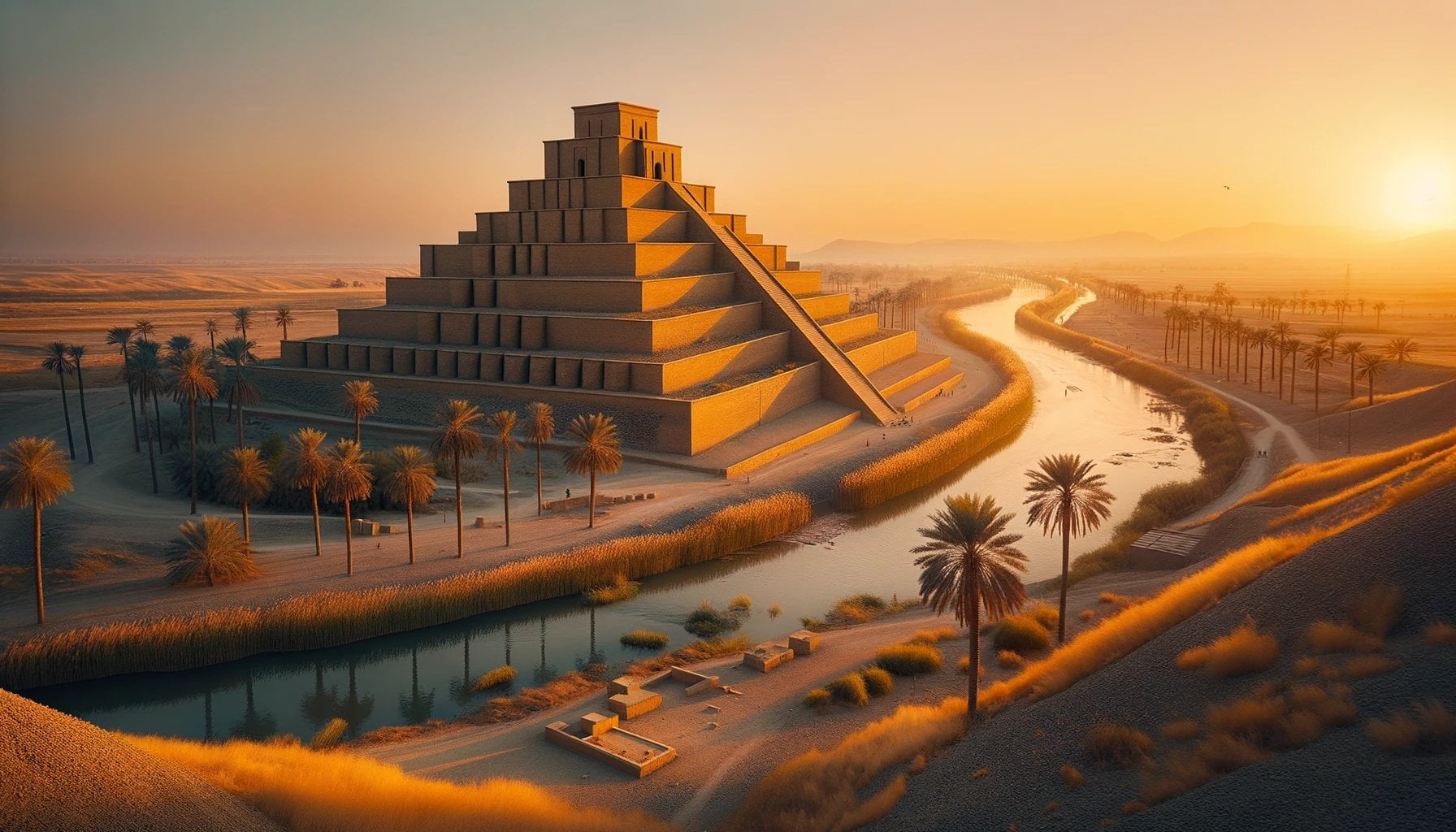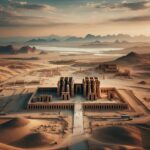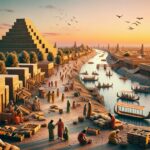Discover the remarkable world of Mesopotamian architecture as we unveil the distinctive features that make it truly unique. From the towering ziggurats to the grand palaces, this ancient architectural style showcases remarkable characteristics that reflect the rich history and cultural beliefs of the region. By unraveling the secrets behind the design, symbolism, and functionality of these structures, we delve into the heart of Mesopotamia’s architectural legacy. Join us as we reveal the fascinating world of Mesopotamian architecture and uncover the insights it holds.
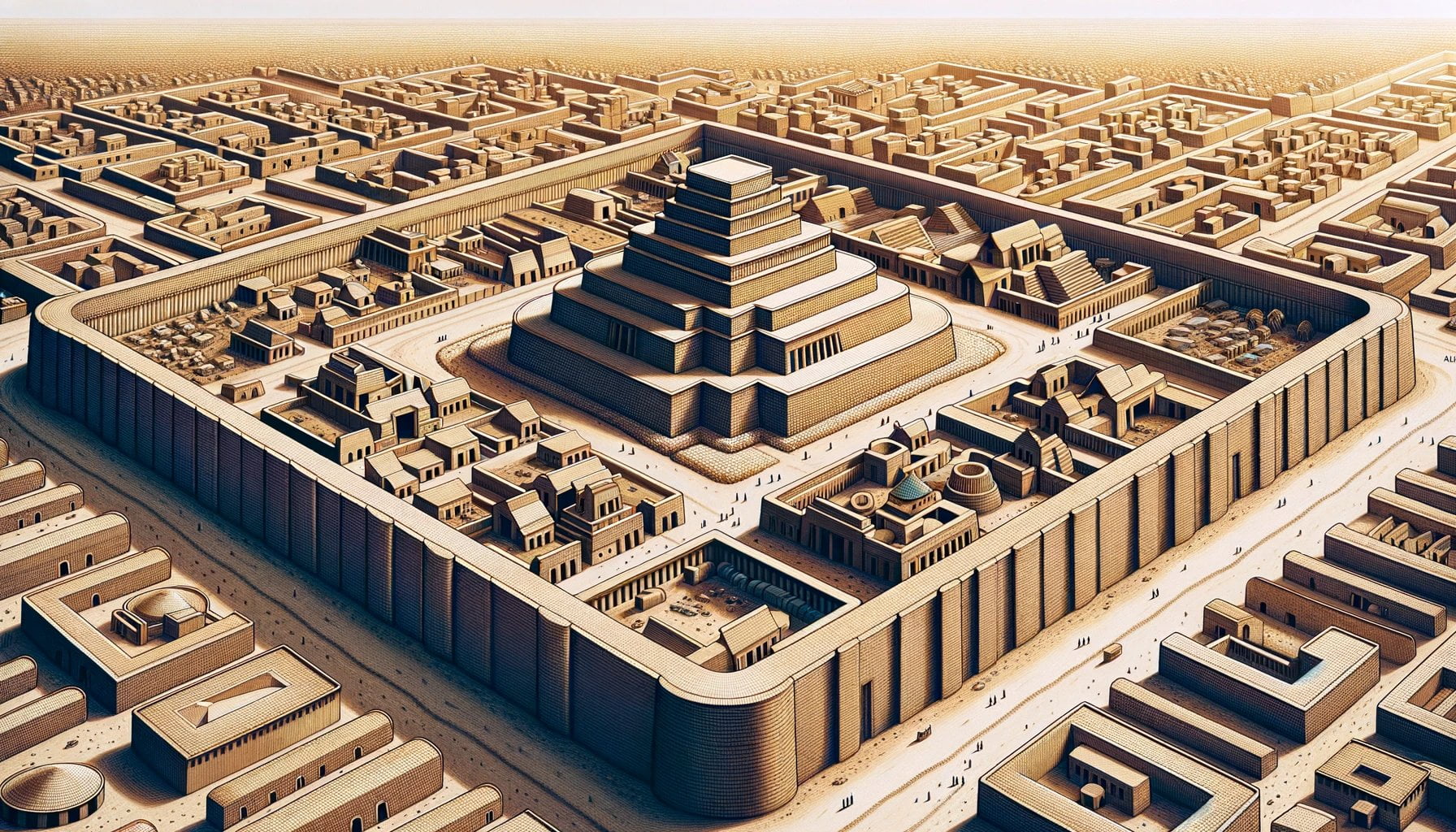
Key Takeaways:
- Mesopotamian architecture showcased advanced engineering skills and included structures such as ziggurats, palaces, temples, and urban planning.
- Archs, columns, domes, and vaults were commonly used in Mesopotamian architecture to construct grand and monumental buildings.
- Canals and aqueducts were crucial for irrigation, transportation, and water management in Mesopotamia.
- Landscaped gardens enhanced the aesthetics of Mesopotamian buildings and provided a peaceful retreat.
- Cuneiform writing was often found on unbaked bricks, allowing for the recording of important information on the buildings.
- Houses in Mesopotamia were typically made of wooden doors, mud bricks, and reeds, providing insulation against extreme weather conditions.
- Mesopotamian architecture reflected the advanced knowledge and skills of the ancient civilization and continues to influence modern-day architecture.
What is a Characteristic of Mesopotamian Architecture?
Mesopotamian architecture, spanning thousands of years, showcases remarkable feats of engineering and design. From the iconic ziggurats to grand palaces and temples, the structures of Mesopotamia reveal distinctive characteristics that define this ancient architectural style. In this article, we will delve into the key features that set Mesopotamian architecture apart.
Variety of Structures: Grand Testaments to Engineering Expertise
Mesopotamian architecture encompasses a range of structures that showcase the advanced engineering and architectural skills of this ancient civilization. The ziggurats, towering stepped pyramids often associated with ancient Mesopotamia, stand as enduring symbols of their architectural prowess. These monumental structures served as temples, linking the earthly and divine realms. Additionally, large-scale palaces and temples exemplify the grandeur and scale that the Mesopotamians achieved in their architectural endeavors.
Architectural Elements: Building Blocks of Monumentality
The use of arches, columns, domes, and vaults played a significant role in Mesopotamian architecture. These architectural elements enabled the construction of grand and monumental buildings, providing both strength and aesthetic appeal. These structures were constructed using sun-dried mud bricks that were incredibly durable and allowed for the creation of intricate designs and patterns.
Canals and Aqueducts: The Lifeblood of Urban Civilization
The success of urban civilization in Mesopotamia can be attributed partially to the ingenuity of their engineering feats. Canals and aqueducts played a crucial role in Mesopotamian architecture, facilitating irrigation, transportation, and the management of water resources. By harnessing the power of the region’s mighty rivers, such as the Tigris and Euphrates, the Mesopotamians created a network of waterways that supported agricultural productivity and sustained their cities.
Lush Gardens: Aesthetic Oasis in Urban Environments
Mesopotamian architecture integrated beautifully landscaped gardens, transforming urban landscapes into tranquil havens. These gardens featured lush vegetation, water features, and ornamental structures, creating serene retreats for the inhabitants. By incorporating nature into their architectural designs, the Mesopotamians sought to enhance the aesthetics of their built environment and provide respite from the bustling urban life.
Cuneiform Writing: Inscribing History on Structures
Cuneiform writing, one of the earliest known writing systems, was commonly found on unbaked bricks with flat surfaces in Mesopotamian architecture. This form of writing allowed for the recording of important information, such as ownership and construction details, directly onto the buildings themselves. It provided a tangible link between the architectural structures and the historical context in which they were created, allowing future generations to understand their significance.
Houses: Adaptation to Environment and Climate
Houses in Mesopotamia were primarily constructed using wooden doors, mud bricks, and reeds. These locally available materials not only provided insulation against the extreme weather conditions prevalent in the region but also ensured structural stability. The innovative use of these materials reflects the adaptability of Mesopotamian architecture to the local environment and the unique challenges it posed.
In conclusion, Mesopotamian architecture is characterized by a variety of structures, the use of architectural elements, the prominence of canals and aqueducts, the incorporation of landscaped gardens, the presence of cuneiform writing, and the use of locally available materials for house construction. These distinctive features highlight the advanced knowledge and skills of the ancient Mesopotamians, shaping their unique architectural style and leaving a lasting influence on modern-day architecture.
Learn about the fascinating world of Mesopotamian astronomy and discover how ancient civilizations observed and studied the stars. Explore more about Mesopotamian astronomy here.
Uncover the secrets of Mesopotamian swords and delve into the art and craftsmanship behind these ancient weapons. Click here to explore the world of Mesopotamian swords.
Embark on a journey through Mesopotamian cosmology and unravel the beliefs and myths surrounding the origin and structure of the universe. Discover more about Mesopotamian cosmology here.
Dive into the philosophical minds of Mesopotamian thinkers and explore their profound insights and ideologies. Click here to delve into the world of Mesopotamian philosophers.
Interested in Mesopotamian achievements? Learn more about the incredible contributions made by the people of Mesopotamia by clicking here.
Uncover the economic systems and practices of ancient Mesopotamia, and understand how commerce thrived in the birthplace of civilization. Explore more about economics in Mesopotamia here.
Incorporation of Arches and Vaults in Construction
Arches and vaults have long been recognized as significant elements in the field of architecture, and their incorporation in construction has played a crucial role in various civilizations throughout history. Mesopotamian architecture, which encompasses the region of the Tigris-Euphrates river system, showcases remarkable advancements in urban planning and the use of arches and vaults.
Dating back to the 10th millennium BC, the first permanent structures in Mesopotamia marked the beginning of ancient Mesopotamian architecture. Over the centuries, different cultures in the region contributed to the growth and evolution of Mesopotamian architecture. The development of vaults can be traced back to the discovery of the arch, which appeared in ancient Egypt and the Near East. The basic “barrel” form of the vault is essentially a three-dimensional arch.
Vaults, self-supporting arched structures typically constructed with stone or brick, served as ceiling or roof coverings in Mesopotamian architecture. The process of building a vault involved the construction of temporary supports while placing rings of voussoirs in position. Vaults were incorporated into various architectural structures, such as buildings, palaces, and temples, in Mesopotamia.
The inclusion of arches and vaults in architecture had a profound impact on the construction industry. Vaults, in particular, enabled the creation of larger, open interior spaces without the need for additional support structures. This allowed for the construction of monumental buildings, fortifications, and temples. The study of ancient Mesopotamian architecture is based on archaeological evidence, pictorial representations of buildings, and texts on building practices.
The significance of incorporating arches and vaults in construction can still be seen in modern architecture, showcasing the enduring legacy of this technique. By understanding the historical significance and engineering principles behind arches and vaults, architects and designers today can continue to innovate and create awe-inspiring structures.
Key Takeaways:
- Arches and vaults have been significant elements in architecture throughout history.
- Mesopotamian architecture utilized arches and vaults in the construction of buildings, palaces, and temples.
- Vaults allowed for the creation of larger, open interior spaces without the need for additional support structures.
- The inclusion of arches and vaults in construction demonstrated the engineering prowess and design ingenuity of ancient civilizations.
- The study of ancient Mesopotamian architecture is based on archaeological evidence, pictorial representations, and texts on building practices.
Sources:
Symbolic Representation of Religious and Social Structures
Religious symbolism and social structures played an influential role in Mesopotamian architecture, providing insight into the beliefs and hierarchy of ancient societies. From temples to palaces, the architecture of Mesopotamia showcased intricate symbolic representations of religious and social structures. In this article, we will explore the distinctive features of Mesopotamian architecture and how they expressed these symbolic representations.
The Link Between Architecture and Religion
Mesopotamian architecture, spanning thousands of years, was deeply influenced by religious beliefs. Temples, such as the iconic ziggurats, were not only places of worship but also served as physical links between the earthly and divine realms. These monumental structures stood tall and were adorned with vibrant colors and intricate carvings, showcasing their importance in religious rituals and symbolizing the connection between humans and gods.
Symbolism in Iconography
Religious figures and authorities held significant symbolism in Mesopotamian architecture. Sculptures and reliefs depicted deities, saviors, heroes, and avatars, representing their roles in the spiritual realm. These representations not only provided visual imagery but also conveyed the power, wisdom, and protection that these figures bestowed upon their followers.
Ritualistic Symbols and Offerings
Religious rituals in Mesopotamian society involved symbolic actions and objects. The place of offering, the altar, and its trappings were meticulously designed to convey the sacred nature of the rituals. The careful arrangement of objects and the inclusion of symbolic elements, such as incense burners and sacred animals, enhanced the spiritual experience and connected worshippers to their beliefs.
Social Hierarchy Manifested in Architecture
Just as religion played a central role, Mesopotamian architecture also reflected the social hierarchy of the society. Different classes based on rank and privilege were evident in the design and allocation of spaces within structures. Palaces, for example, showcased the wealth and power of rulers, with grand halls and private chambers reserved for the elite. This architectural differentiation emphasized social distinctions and reinforced the authority of the ruling class.
Transmitting Sacred Information
Symbolic architecture served as a means of transmitting sacred information in a associative way. The inclusion of specific motifs, patterns, and colors in architectural features allowed for the communication of religious teachings, myths, and historical events. These symbols had a visual impact, allowing individuals to connect with the divine and deepen their understanding of the religious dimensions of Mesopotamian society.
Key Takeaways:
- Mesopotamian architecture was heavily influenced by religious beliefs and social structures.
- The link between architecture and religion was evident in the symbolic representations found in temples and palaces.
- Iconography of religious figures portrayed their roles and significance in the spiritual realm.
- Ritualistic symbols and offerings were incorporated into religious rituals to enhance the sacred experience.
- Social hierarchy was reflected in the design and allocation of spaces within structures.
- Symbolic architecture served as a medium for transmitting sacred information and deepening religious understanding.
Sources:
– Britannica – Religious symbolism and iconography
– Wikipedia – Architecture of Mesopotamia
Influence of Irrigation Systems on Architectural Design
The architecture of ancient Mesopotamia was not only shaped by practical considerations and aesthetic principles, but also by the influence of irrigation systems. The development and maintenance of these systems played a crucial role in the design and construction of various architectural structures. Let’s explore the fascinating connection between irrigation systems and architectural design in Mesopotamia.
The Role of Irrigation Systems
In Mesopotamia, the availability of water was essential for the survival and prosperity of the civilizations that flourished in the region. The Tigris and Euphrates rivers provided the lifeline for agriculture, and the success of the agricultural practices relied heavily on a well-organized system of irrigation.
Water Management and Urban Planning
The need to efficiently distribute water for irrigation purposes influenced the planning and layout of cities in Mesopotamia. Canals and aqueducts were constructed to control and divert water to agricultural fields, ensuring a steady supply of water for crops. The intricate network of canals also facilitated transportation and enabled the development of trade routes.
This emphasis on water management and distribution had a direct impact on the design of cities. Urban centers were often built near rivers or canals, and the layout of the city took into account the need for easy access to water sources. Streets and pathways were strategically planned to ensure efficient movement of water and transportation of goods.
Impact on Architectural Design
The influence of irrigation systems on architectural design can be observed in various aspects of Mesopotamian structures. The availability of water shaped the choice of building materials, such as mud bricks, which were abundant and easy to produce using the fertile soil near the rivers.
Additionally, the use of arches and vaults in the construction of buildings, palaces, and temples can be attributed, at least in part, to the engineering skills developed in the management of irrigation systems. The study of hydraulics and the need to distribute water efficiently may have contributed to the architectural innovation of using arches and vaults for larger, open interior spaces without the need for additional support structures.
Symbolism and Functionality
In Mesopotamian architecture, the interplay between symbolism and functionality was evident. The importance of water in religious rituals and beliefs was reflected in the design of temples and ziggurats. These structures, often situated near rivers or canals, served as physical manifestations of the connection between the earthly and divine realms.
Furthermore, the inclusion of water features, such as pools, fountains, and beautifully landscaped gardens, added a sense of serenity and tranquility to urban environments. These elements not only provided aesthetic appeal but also served as a practical means of cooling and refreshing the surroundings in the harsh Mesopotamian climate.
In conclusion, irrigation systems played a significant role in shaping the architectural design of ancient Mesopotamia. The need for water management and distribution influenced urban planning, choice of building materials, and even the structural elements used in construction. By understanding the influence of irrigation systems on architectural design, we gain deeper insights into the rich and complex civilization that thrived in this region.
Key Takeaways:
– Irrigation systems were crucial in Mesopotamia for agriculture and water distribution.
– The layout of cities and urban planning were influenced by the need for efficient water management.
– The availability of water shaped the choice of building materials, such as mud bricks.
– The engineering skills developed in managing irrigation systems contributed to the use of arches and vaults in architectural design.
– Water symbolism was integrated into religious and architectural elements.
– Water features added aesthetic appeal and provided practical benefits in the urban environment.
Sources:
– Wikipedia: Architecture of Mesopotamia
– Britannica: Mesopotamian Art and Architecture
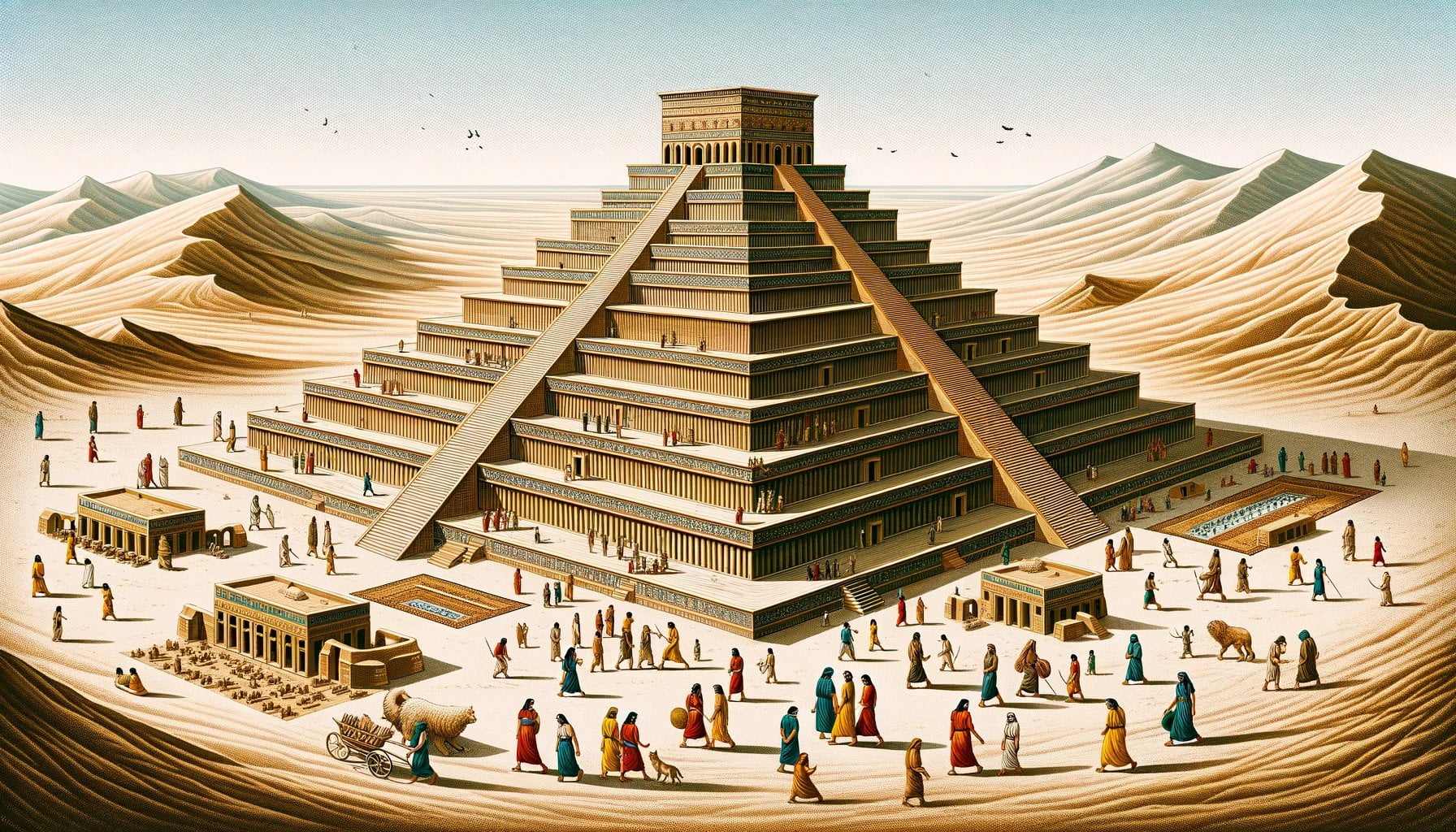
FAQ
Q1: What are some distinct characteristics of Mesopotamian architecture?
A1: Mesopotamian architecture is characterized by the use of arches, columns, domes, and vaults, as well as the incorporation of landscaped gardens and the presence of cuneiform writing on buildings.
Q2: What types of structures were prominent in Mesopotamian architecture?
A2: Some prominent structures in Mesopotamian architecture include ziggurats, large-scale palaces and temples, and urban planning.
Q3: What role did canals and aqueducts play in Mesopotamian architecture?
A3: Canals and aqueducts were crucial in Mesopotamian architecture as they facilitated irrigation, transportation, and the management of water resources, contributing to the development of urban civilization.
Q4: What materials were commonly used in the construction of houses in Mesopotamia?
A4: Houses in Mesopotamia were typically constructed using wooden doors, mud bricks, and reeds, which provided insulation against extreme weather conditions.
Q5: How did Mesopotamian architecture reflect the advanced knowledge and skills of the ancient civilization?
A5: Mesopotamian architecture showcased the advanced engineering and architectural skills of the ancient civilization through the construction of grand structures, the usage of architectural elements, and the incorporation of natural elements.
- Star Ring Trends: Etsy vs Amazon - March 28, 2025
- Boost Pollinator Habitats: Baby Blue Eyes Sustainable Farming Guide - March 28, 2025
- Protect Big Black Bears: Effective Conservation Strategies - March 28, 2025
